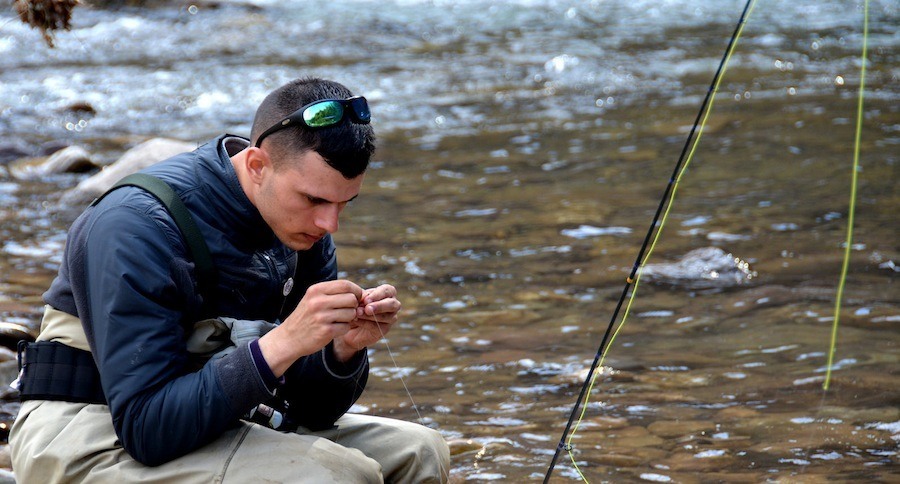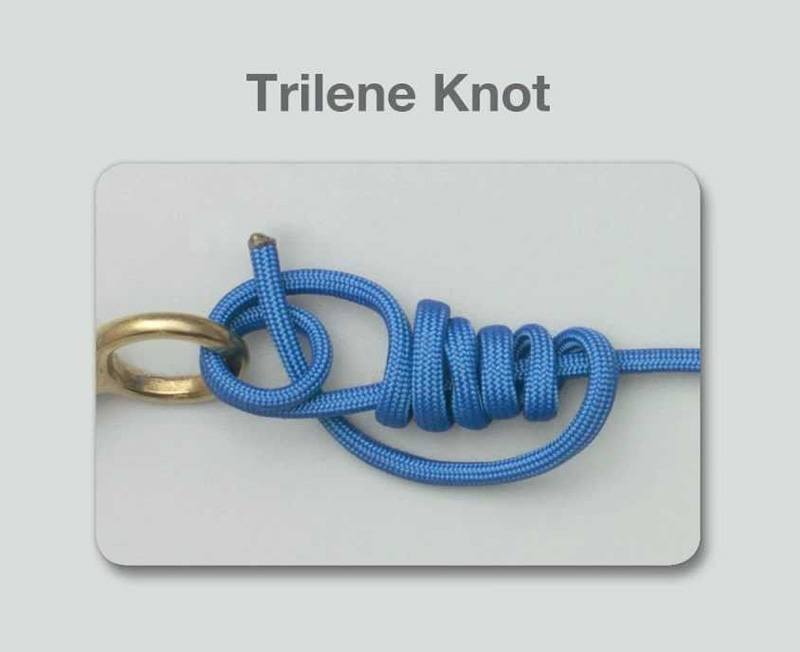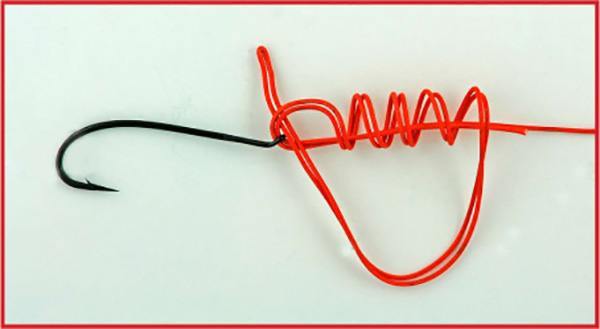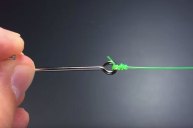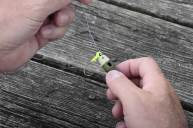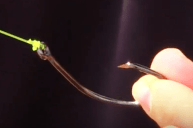You didn't even know you wanted these fly fishing knots in your life.
Here's how I feel about fly fishing knots: do you remember chemical nomenclature? That unit at the start of chemistry class, where you memorized the breathtakingly uninteresting way that chemicals are named? And if you don't pay attention, you should ditch any hope of getting higher than a 67 that semester?
I didn't do very well in chemistry, by the way.
But yeah, knot tying; it's a dull but necessary first step for anglers whether you're attaching new dry flies or just hooking up the end of the leader. And if you do it wrong, you have to do it again. Since that's even more annoying, I've come to terms with learning a few extra knots if means more time with a fly rod in hand and less time trying to thread monofilament through those tiny hook eyes and clipping tag ends.
Here's a few different knots I think have the utility to be worth memorizing.
Trilene Knot
It seems like fly fishermen haven't yet worked out a good knot specifically for tandem flies. My clinch and blood knots frequently slip when tied to the hook bend. Maybe I'm doing it wrong. Either way, the trilene knot is an excellent alternative. The double line loop around the hook bend gives it extra grip, making it one of the best alternatives for making that tandem connection. You may also hear this knot referred to as the "improved clinch knot."
Double Clinch Knot (B.C. Knot)
One of the crudest and most effective ways to strengthen a knot is to double the line. The double clinch knot is redundant in most situations, but many guides prefer it for fishing big chinook and steelhead. Bonus: you probably already know how to tie this one to the end of the fly line.
[divider]
More from Wide Open Spaces:
This Knife Sharpening Trick Will Blow Your Mind [VIDEO]
Hunter Charges Buck in this Insane Spot and Stalk Bow Hunt [VIDEO]
15 Fishing Compliments That Are Actually Insults [PICS]
[divider]
Uni Knot
This is probably the most versatile fly fishing knot around, and the only one that can make every connection from the backing to the fly. Two uni knots can be tied together for a line-to-line connection. When tying to the hook the uni knot can make a strong connection while allowing the fly to dangle in an open loop. This grants the fly some wiggle, adding natural movement.
On a darker note: the uni knot is identical to the hangman's noose. You may also hear this knot referred to as the "Duncan loop knot." It's a favorite for use with streamers.
Homer Knot
The homer knot or "homer rhode loop knot" is one of the burliest fly fishing knots for connecting small flies to the tippet. It's considered indispensable for fishing salmon, steelhead, and saltwater. Lefty Kreh invented a modified version, the non-slip mono knot. Kreh's knot adds a loop to the end of the homer knot. The impressive strength is retained and the fly moves more naturally in the water.
Double Sheet Bend
This one is often taught as a modified square knot for joining ropes of different diameter. Given that, it has some pretty obvious applications for fly fishing where fishing line is concerned. Like the uni knot, the greatest advantage to the double sheet bend is its flexibility and reliability for multiple applications. This knot can be used for every connection from the backing to the tippet. It's no good for tying on the fly, though.
Commit these knots to memory, and your fly fishing days will be filled with, well, knots. But that's a good thing. It means less time re-tying and more time hearing your fly reel screaming as a big fish peels off line!
NEXT: THE BIG LIST OF THE BEST FLY FISHING WADERS
